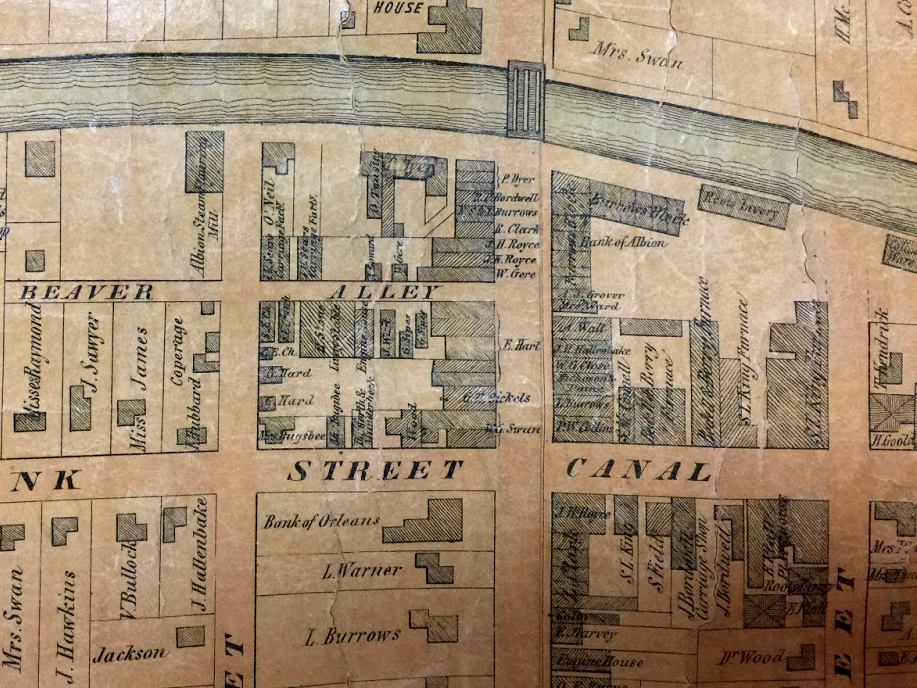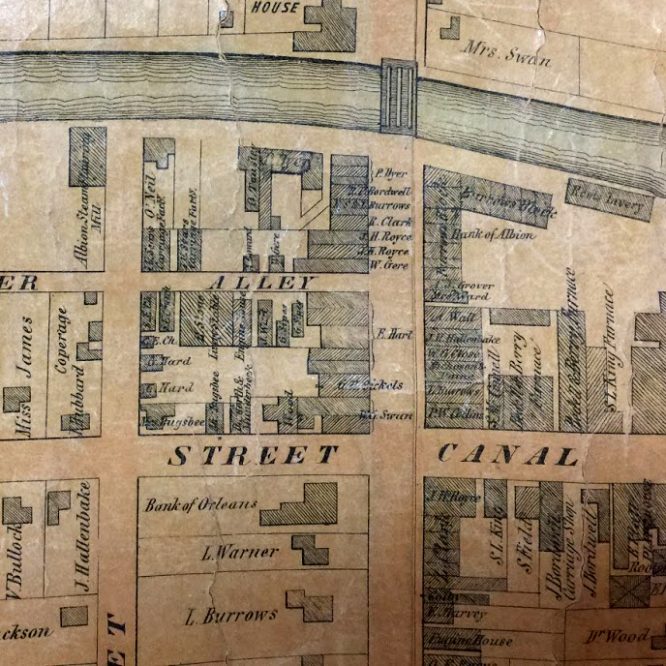
Vol. 4, No. 45
Toponymy, the study of place names, origins, meanings, and use, is an area of focus often overlooked locally. The history of Orleans County is a mixture of the ordinary and the extraordinary, so it is no surprise that the origins of place names in our area would follow a similar pattern. A recent influx of questions regarding name choices for various hamlets, towns, and streets sparked an interest in digging deeper beyond the brief notations found within the files of the Department of History. A file marked “Place Names” reveals very little about the variety of titles affixed to points of interest in our area, so I thought it would be worthwhile to delve into a few examples over several articles.
Beaver Alley is perhaps the most notable local street oddity and is likely to arouse a chuckle or two on occasion. Neil Johnson described several street name origin stories in his column “Albion, Oh Albion” (no. 1195, 14 SEP 2006). Of course, Bank Street was named for the Bank of Orleans that sat on the southwest corner of Bank and Main Streets, Clinton Street was named in honor of New York Governor and Erie Canal supporter DeWitt Clinton, and East and West Academy Streets were named for the nearby Albion Academy. As for Beaver Alley, he wrote, “It is clear, from early maps and deeds, that there was a little canal basin or canal right behind the stores on Main Street that extended to Beaver Alley. Whether that influenced the name or not I have no idea.”
On occasion, historians dig deep into the available information to develop an educated guess as to why something, a street in this case, was named in a particular manner. In most cases, documentation describing the process of officially accepting or designating a place name exists within local records. However, rarely do those records provide any insight into the discussion that surrounded the selection of the name in the first place, or who generated the idea in the first place.
Harvey Goodrich, a native of Herkimer County, New York, traveled to Albion in the mid-1820s after spending several years as a hat maker in Auburn. According to Arad Thomas, Goodrich “having been successful in accumulating property…with his brother-in-law, George W. Standart, took a job of work in making the Erie Canal, and leaving Auburn after his canal work was completed…located permanently at Albion in the year 1824, and engaged in selling dry goods and groceries…” Thomas also noted that after the death of his brother-in-law, Goodrich discontinued his dry goods business and commenced in the manufacturing of hats and dealing in furs.
The production of hats using beaver fur was quite common up into the 1850s, so popular that by the mid-1600s, the beaver’s natural breeding ground in Europe was nearly exhausted. From that point forward, North American became the primary supplier for hat fur in both the Old and New World. At the time Goodrich was operating his business in Albion, beaver fur was still a common material used in the manufacture of hats, but the addition of wool or hare fur was used in the production of less-expensive headgear.
Isaac Signor provides one other piece of information that is helpful in tracing the origin of the Beaver Alley name. In Landmarks of Orleans County, Signor writes, “The west side [Main Street] consisted of a warehouse on the dock, which was afterward burned, and one or two brick stores, extending as far as Beaver alley, on the corner of which Harvey Goodrich kept a hat store.” This information would suggest that Goodrich’s business became the source of the Beaver Alley name.
It may be worth noting, as a humorous side-note, that mercury was used to manufacture hats though it was generally understood that the chemical caused damage to the nervous system. While hat makers labored in poorly ventilated areas, the exposure to mercury would cause trembling and aggressiveness, symptoms of insanity. This is believed to be the origin of the phrase “mad as a hatter.”

